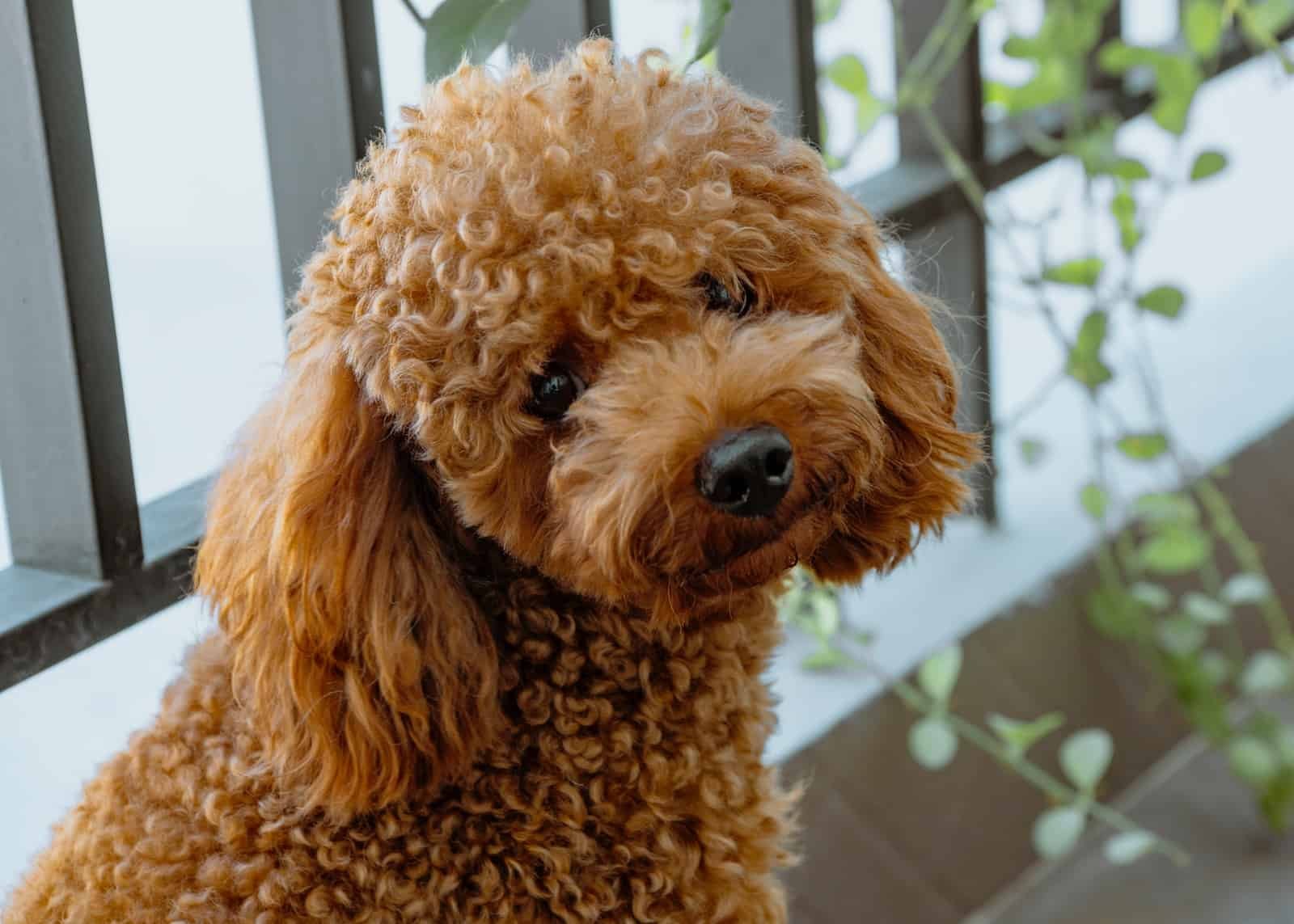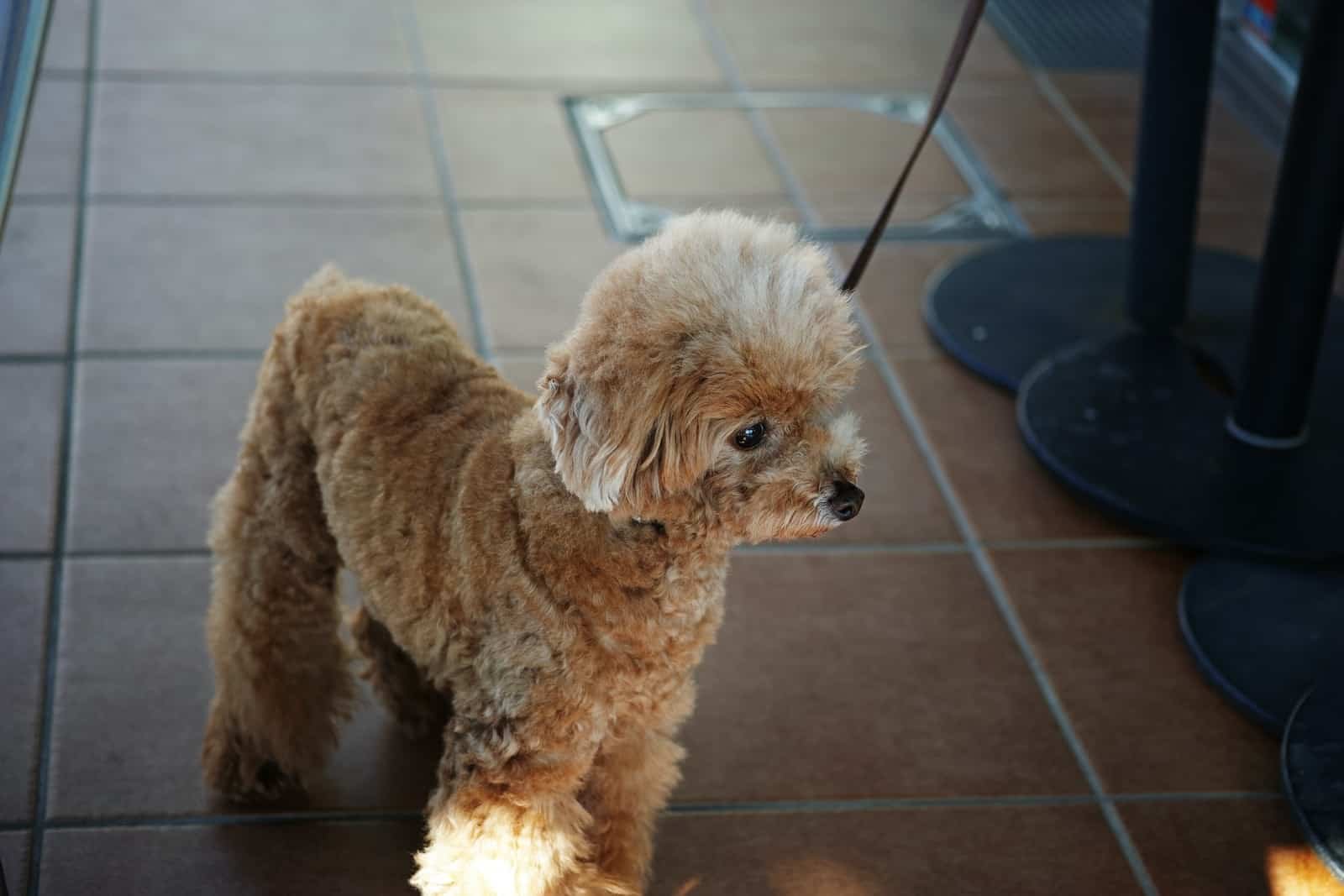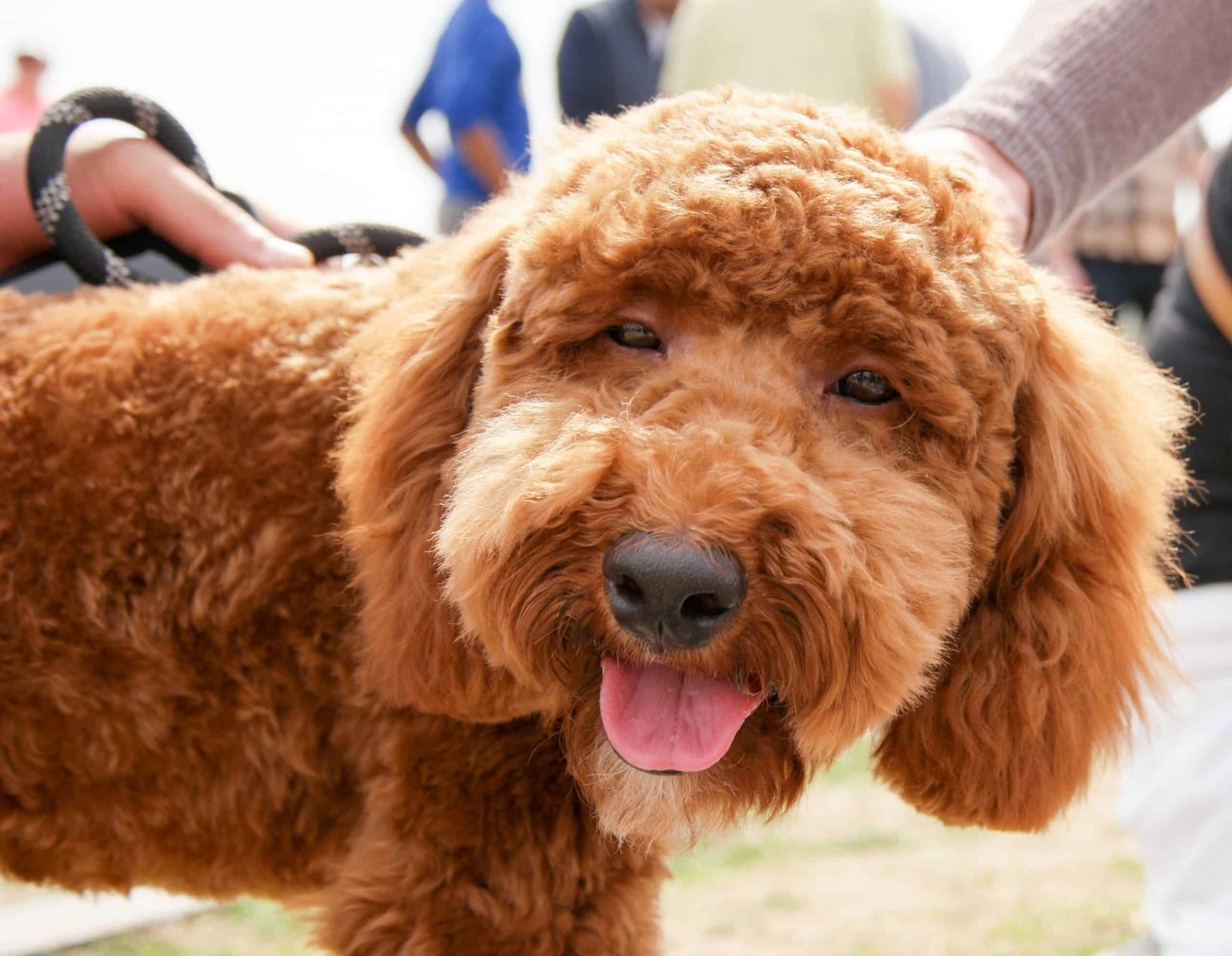
From Our Experience: As poodle enthusiasts who have worked with hundreds of poodle owners and rescue organizations over the years, we’ve gathered real-world insights that go beyond textbook knowledge. The information in this article reflects both professional expertise and hands-on experience with poodles of all sizes and temperaments.
Last Updated: November 2025 – This article has been reviewed and updated to ensure accuracy.
Overview of Poodle Breed
The Poodle is a distinct breed of dog that has been around since at least the 14th century. They have an interesting history, being used as a water retriever for duck hunting in Germany and France in the 17th century. It was from here that standard poodles, miniature poodles, and toy poodles were bred by crossing with other breeds, like sleeve dogs.
The Poodle is now one of the most popular dog breeds and is known for its intelligence and activity level. They are often seen taking part in agility courses, obedience competitions, and even truffle hunting. These dogs require daily brushing to keep their curly coat healthy, but rarely suffer from many health issues such as hip dysplasia because of careful breeding practices.
Whether you are looking for a companion dog or an active working animal, the Poodle may be just the right fit! It’s no wonder why this national breed remains popular today.
History of the Breed
The Poodle has a long and storied history, with its earliest origins dating back to the 14th century. It is believed that they were initially bred as water retrievers in Germany and France, where they were sought after for their ability to swim in cold water. In the 17th century, poodles were further refined by crossing them with other breeds such as sleeve dogs, resulting in three distinct sizes: standard, miniature, and toy poodles.
Today, the Poodle is one of the most popular dog breeds thanks to its intelligence, athleticism, and friendly personality. They have been used for a variety of tasks, including truffle hunting and agility competitions. This highly active breed requires daily brushing to keep their coat healthy, but is a very healthy breed because of judicious breeding practices.
Whether you’re looking for an attentive companion or an energetic working dog, the Poodle may be just what you’re looking for! With centuries of history behind them, it’s no wonder why this intelligent breed remains so popular today.
Origin
The Poodle breed has a long history which dates back to the 14th century. It is believed to have been originally bred as a water retriever in Germany and France, where it was highly sought after for its swimming ability in cold water. In the 17th century, they were further refined by crossing them with other breeds such as sleeve dogs, resulting in three distinct sizes of standard poodles, miniature poodles and toy poodles.
Today, the Poodle is a popular breed due to its intelligence, athleticism and friendly personality. It has been used for duck hunting, truffle hunting and agility competitions, as well as being an attentive companion or energetic working dog. This active breed requires daily brushing to keep their coat healthy, but due to judicious breeding practices, it is a very healthy breed.
The Poodle’s popularity has endured over centuries thanks to its intelligence and flexibility, making it an ideal pet suitable for many lifestyles.
French or German?
The Poodle is a breed of dog originating from both Germany and France, with records of the breed dating back to the 14th century. The Poodle was originally bred as a water retriever and became a highly sought after breed because of their swimming abilities in chilly waters. Throughout the 17th century, they were further refined by crossing them with other breeds such as sleeve dogs, resulting in three distinct sizes; standard poodles, miniature poodles, and toy poodles.
Today, the Poodle is a popular breed with many accolades, including intelligence, athleticism and friendly personality. They have been used for duck hunting, truffle hunting and agility competitions, as well as being an attentive companion or energetic working dog. Due to judicious breeding practices, this active breed is very healthy although daily brushing is required to keep their coat healthy.
The Poodle’s popularity has endured over centuries thanks to its intelligence and adaptability, making it an ideal pet suitable for many lifestyles; whether you are looking for a family pet or an active working dog, the Poodle may just be the perfect fit!
Ancient Breeds and Origins
As alluded to above, the Poodle’s exact origins are not known, but it is believed to have descended from various breeds of water dogs in Europe. The breed was further developed in France, Germany, and other parts of Europe.The breed has been mentioned in literature as far back as the 14th century and is believed to have been developed from a mix of water dogs such as the Barbet, Old German Water Dog, French Barbet and Hungarian Water Hound. The Poodle has since evolved over centuries into three distinct sizes; standard poodles, miniature poodles, and toy poodles.
The breed was initially used for duck hunting but has since become a beloved companion pet because of its intelligence, athleticism and friendly personality. Poodles are highly adaptable, making them suitable for many lifestyles; they are often seen taking part in agility competitions or truffle hunting activities. While the breed is healthy, they require daily brushing to keep their coat healthy.
Poodles have endured throughout the centuries thanks to their intelligence and adaptability, making them an ideal pet for anyone looking for a loyal companion or energetic working dog.
17th Century Development in France
The Poodle is believed to have been developed in the 17th century in France and was originally used as a water retriever. In this period, the breed began to further differentiate itself from other breeds with its trademark curly coat and physical activity level.
In France during that era, the Poodle was referred to as “sleeve dogs” due to their tight curls that made them look like they were wearing sleeves. This distinct look helped them become more popular and eventually earned them recognition as a national breed.
As the centuries went on, the Poodle became one of the most popular breeds due to its intelligence, athleticism, and friendly personality. The breed’s ability to perform well in cold water conditions made it an ideal choice for hunters looking for a reliable companion. Because of their popularity and success in hunting activities, they quickly gained recognition as an intelligent and healthy breed.
Today the Poodle remains one of the most popular dog breeds around the world thanks to its adaptability and loyalty, making it an ideal pet for anyone looking for a loving companion or energetic workmate.
19th Century Expansion in Europe & North America
The 19th century saw the Poodle’s popularity spread to Europe and North America. As a highly trainable breed, Poodles soon made their way onto the show circuit, performing tricks and amusing crowds with their intelligence. This led to them becoming more widely available in Europe and North America.
In these areas, the breed was further developed and refined into three distinct sizes; standard, miniature, and toy poodles. These sizes met the needs of various owners, depending on their lifestyle or preferences. The standard poodle is the largest of the three types, with an average weight of 45-70 pounds and a height of 15-22 inches. Miniature poodles are smaller at 10-15 inches tall with an average weight of 15-17 pounds while toy poodles are even smaller at up to 10 inches in height and 6-9 pounds in weight.
Poodles are also known for being low maintenance when it comes to grooming, as they only need daily brushing and occasional trimming or clipping. In addition, they have relatively few health problems, such as hip dysplasia, which can be prevented through regular exercise and proper nutrition.
Today (20th Century), Poodles continue to be popular pets because of their intelligence, playful nature, adaptability, loyalty, and good looks, making them an ideal companion for any loving family.
Characteristics
Poodles are distinguished by their unique curly coat of hair, which is why they are one of the most popular dog breeds in the world. This distinctive trait also serves to protect them from cold water and makes them adept at duck hunting and other water retrievers. Poodles have a high activity level and love physical activity, making them great companions for people who enjoy outdoor activities. They were originally bred as truffle hunters, and many poodle-like dogs existed as early as the 14th century. In 17th century Europe, however, Poodles became a distinct breed with its own characteristics and attributes.
The intelligence of Poodles is one of the main reasons they are such a popular breed today. As highly trainable dogs, they can learn commands quickly and will often surprise owners with their eagerness to please. Poodles are healthy breeds that live longer than many other dog breeds because of proper care and nutrition. With their good looks and intelligence combined with low maintenance grooming requirements, it’s no wonder that Poodles remains one of the most popular national breeds around the world today.
Modern Functional Advantages
Poodles have come a long way since their original purpose as water retrievers and truffle hunters. Today, they are a beloved companion breed that offers many modern functional advantages to pet owners. Poodles are excellent watchdogs and can alert their owners to potential danger quickly. They also make great therapy dogs because of their friendly and intelligent nature; they are able to bond with people of all ages and provide much needed comfort in high-stress situations.
Poodles have a long and rich history going back centuries. They are believed to have originated in Germany, where they were used as water retrievers for duck hunters. In the early 1700s, Poodles were brought to France, where their popularity proliferated among the aristocracy because of their intelligence, agility and elegant appearance. Over time, three distinct types of Poodle emerged: Standard, Miniature, and Toy.
Furthermore, due to their obedient nature and intelligence, Poodles can easily be trained for service work such as guiding the blind or assisting those with physical disabilities. With the right training, Poodles can become faithful companions who offer unconditional love and loyalty for years to come.
Besides their popularity as show dogs, Poodles were also used for truffle hunting and herding sheep. In the late 19th century, they were even given their own breed classification by the American Kennel Club, when they became one of the first nine breeds to be recognized in the United States. Since then, Poodles has continued to be one of the most popular dog breeds in the world, thanks to their loyal, affectionate and intelligent nature.
Physical Characteristics of Poodles
Poodles are a unique and distinct breed known for their elegant physical characteristics. From the curly coat to their proud stature, Poodles come in three sizes – Standard, Miniature and Toy. Standard Poodles measure between 15-22 inches at the shoulder and weigh between 40-70 pounds; they have a square body shape and their long coat can be found in many colors including black, white, blue, silver or grey.
Miniature Poodles are 11-15 inches tall and weigh 10-20 pounds while Toy Poodles stands 8-11 inches tall and weigh 4-6 pounds. All three varieties of Poodle have a distinctive curl pattern on their coats which require daily brushing to keep them looking their best.
All three varieties of the breed carry with them the same level of intelligence that is key to the breed’s success in various competitive dog sports, such as obedience trials or agility competitions.
Finally, because of their low activity level and chief love for cuddling up with owners, all sizes of Poodle make ideal family companions who bring joy into any home.
The Personality of a Poodle
Poodles are well-known for their outgoing personalities and friendly dispositions. They have a zest for life and love interacting with their owners, making them ideal family pets. They are also incredibly intelligent, excelling in obedience trials and agility competitions. But don’t let their intelligence fool you – Poodles still need plenty of physical activity to stay healthy. Even the smaller Toy Poodle variety will require at least half an hour of physical activity every day, such as a good walk or game of fetch in the yard.
Beyond physical exercise, Poodles also need mental stimulation to stay happy and content. This can be done by providing them with interactive toys or teaching them new tricks. They are highly trainable dogs that are eager to please their owners, so it’s important to give them plenty of attention and provide positive reinforcement when they learn something new. With proper training and socialization, these dogs develop wonderful personalities that make them an absolute joy to live with!
Socialising
Socializing a Poodle is essential for their overall development and well-being. They are highly sociable animals that love interacting with humans, so it’s important to expose them to a variety of people on a regular basis. Whether it’s taking them for walks in the park or having visitors over to meet your pup, socialization should start early and take place often.
It’s also important to introduce your Poodle to other pets in the area, as this will help boost their confidence and teach them proper behaviors around other animals. Inviting friends who have friendly dogs over for playdates can be an effective way of helping your pup become comfortable with new people and situations. Positive reinforcement, like treats or verbal praise during these encounters, will encourage good behavior and help build trust between your pup and the new people they meet.
Coat
Poodles are recognized for their thick, curly coats that come in a variety of colors and lengths. While it’s important to keep their coat properly groomed to prevent matting and tangles, it also serves an important purpose. Not only does the fur provide protection from the elements and regulate body temperature, but it also helps repel water due to its dense texture. This makes Poodles a popular breed for water retrieving, as their coats help them stay dry even after swimming or diving into cold water.
To maintain optimal health and appearance, Poodles need daily brushing to remove dead or loose hairs and stimulate natural oils in the skin. Regular trips to the groomer may also be necessary, as depending on the style chosen by the owner, certain areas of the coat may need trimming or shaving every few months. By following these guidelines, owners can ensure their pup’s fur remains healthy and looking its best.
Health
Poodles are a relatively healthy breed, but there are some hereditary health issues to be aware of. One of the most common is hip dysplasia, which is a malformation of the hip joint that can lead to decreased mobility and discomfort. Another potential concern is skin disease, which can range from mild itching and dryness to severe lesions requiring medical attention.
Owners should also watch for signs of heart disease or any other serious health issues, as these can vary depending on the individual pup. Proper nutrition, exercise and regular visits to the vet are essential for maintaining their overall health and wellbeing.
Screening for genetic diseases such as hip dysplasia is recommended before breeding in order to help reduce their occurrence in future generations. With proper care and attention, Poodles can enjoy many years of good health and happiness with their families.
Health Concerns
Poodles are a healthy breed, but like all dogs, they can still be prone to certain health issues. There are some hereditary health concerns that poodle owners should know, such as hip dysplasia and skin disease.
Hip dysplasia is a malformation of the hip joint that can lead to decreased mobility and discomfort. It is a hereditary condition that can be passed down from one generation to the next. While not all Poodles will develop hip dysplasia, it is important to be aware of the signs and symptoms. These can include limping, difficulty getting up or lying down, and decreased activity levels. Treatment options for hip dysplasia can range from conservative management, such as weight management and physical therapy, to surgical interventions, such as total hip replacement.
Skin disease is another common health concern for Poodles. This can range from mild itching and dryness to severe lesions requiring medical attention. There are many potential causes of skin disease, including allergies, hormonal imbalances, and bacterial or fungal infections. Poodle owners should monitor their dog’s skin for signs of irritation or infection, such as redness, swelling, or discharge. Treatment options for skin disease can include topical or oral medications, as well as dietary changes to address potential food allergies.
Besides these hereditary health concerns, Poodles can also be prone to other serious health issues, such as heart disease and certain types of cancer. Signs of heart disease can include lethargy, coughing, and difficulty breathing, while signs of cancer can vary depending on the type and location of the tumor. Poodle owners should know these potential health issues and monitor their dog for any changes in behavior or physical symptoms.
To help reduce the occurrence of hereditary health issues in future generations of Poodles, it is recommended that they be screened for genetic diseases such as hip dysplasia before breeding. This can help to identify carriers of the disease and prevent them from being bred, reducing the risk of passing on the condition to their offspring. Proper nutrition, exercise, and regular visits to the vet are also essential for maintaining the overall health and wellbeing of Poodles.
Lifespan
In terms of lifespan, Poodles are a long-lived breed, with a lifespan that varies depending on their size and genetics. On average, Standard Poodles live for 12-14 years, Miniature Poodles for 14-16 years, and Toy Poodles for 16-18 years. However, with proper care and attention, Poodles can live even longer. Regular brushing is essential to ensure the health of their coats, as well as providing a calming daily routine that they can look forward to. Besides regular grooming, Poodles also require regular exercise and mental stimulation to maintain their physical and mental health. Daily walks or playtime activities such as fetch can help keep them active and engaged.
Poodles are an intelligent and adaptable breed that can make wonderful companions for individuals and families alike. However, it is important to be aware of their potential health concerns and to take proactive steps to maintain their overall health and wellbeing. With the right level of care and attention, poodle owners can look forward to many years of companionship with their beloved pets.
Why Poodle History Matters
Understanding the history of a breed can provide valuable insight into their characteristics, temperament, and potential health concerns. With Poodles, their long and storied history can help us better understand their unique qualities and why they are such a beloved and popular breed today.
The origins of Poodles are shrouded in mystery, but it is believed that they descended from various breeds of water dogs in Europe. Over time, the breed was refined and developed in France, Germany, and other parts of Europe to create the distinct breeds we know today – Standard, Miniature, and Toy Poodles. Each size of Poodle was bred for a specific purpose, from retrieving waterfowl to performing tricks in the circus.
One of the most interesting aspects of Poodle history is their role as a symbol of wealth and refinement. In the 18th and 19th centuries, Poodles were often seen in the company of aristocrats and other wealthy individuals. They were prized for their intelligence, elegance, and trainability, as well as their hypoallergenic coat. Poodles appeared in art, literature, and other forms of media, further solidifying their status as a symbol of status and refinement.
Today, Poodles continue to be a popular and beloved breed around the world. They are highly prized for their intelligence, trainability, and affectionate personalities. Poodles are often used as therapy dogs, and they excel in a variety of roles, from working as service dogs to competing in dog shows and competitions.
Understanding the history of Poodles can also provide insight into potential health concerns and temperament issues. For example, because Poodles were originally bred as hunting dogs, they may have a higher prey drive than other breeds. Similarly, because they were bred for specific, such as retrieving waterfowl, they may be prone to certain types of joint and muscle issues.
In terms of health concerns, Poodles can be prone to hereditary issues such as hip dysplasia and skin disease. Through learning about the breed’s past and the risks it may have, owners can take action to stop or control these problems. Regular veterinary care, screening for genetic diseases, and proper nutrition and exercise can all help to maintain the overall health and wellbeing of Poodles.
Besides health concerns, understanding the history of Poodles can also help owners to better understand their behavioral characteristics. For example, Poodles are highly intelligent and trainable, but they can also be prone to separation anxiety and other behavioral issues if not properly socialized and trained. By researching their background and potential attitude problems, owners can take steps to stop or solve these issues.
In conclusion, understanding the history of Poodles is important for anyone who wants to own or care for these beloved dogs. By learning about their origins, development, and unique characteristics, owners can gain insight into potential health and behavioral issues and take steps to maintain their overall health and wellbeing. With proper care, attention, and preventive measures, Poodles can live long, healthy, and happy lives with their families.








